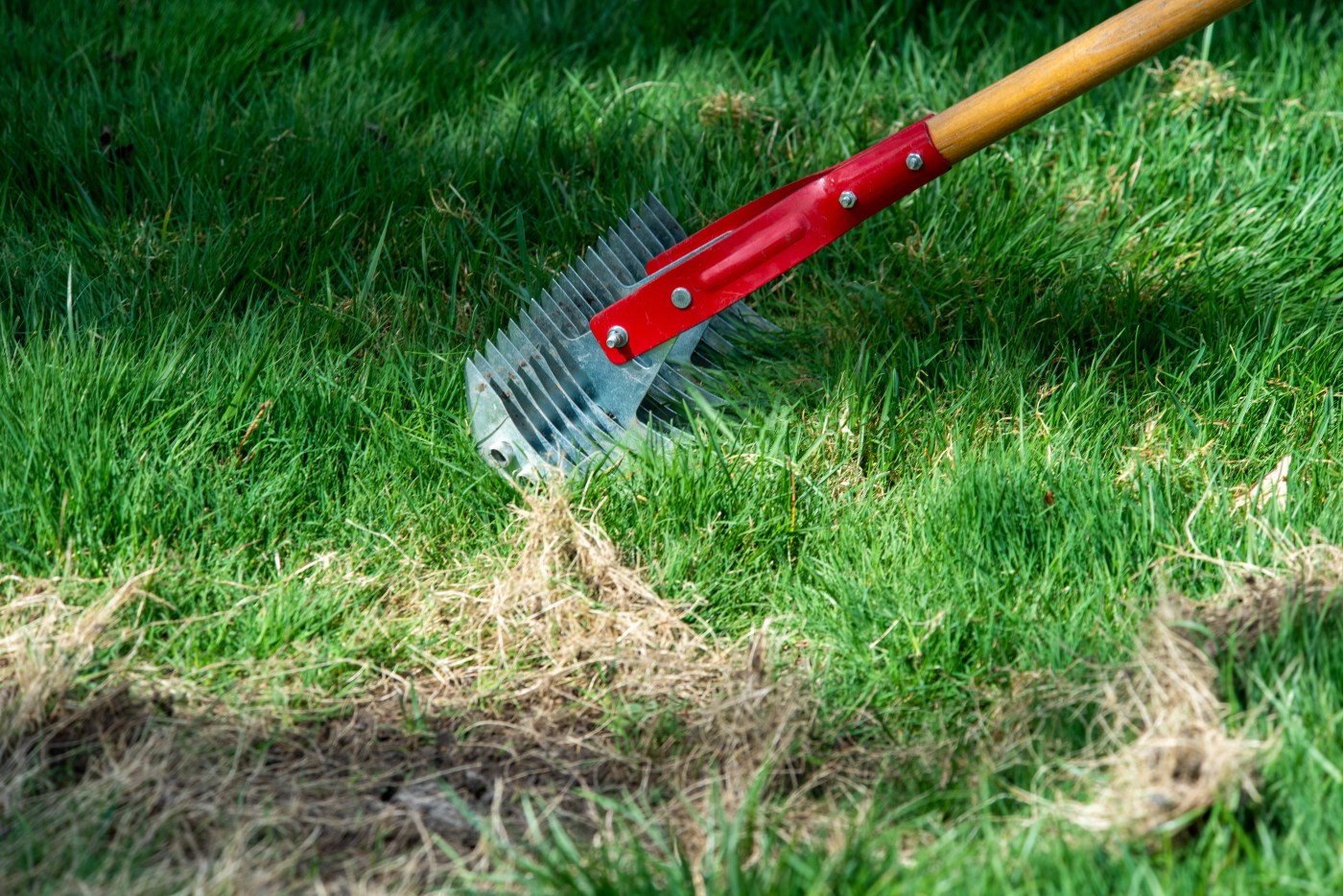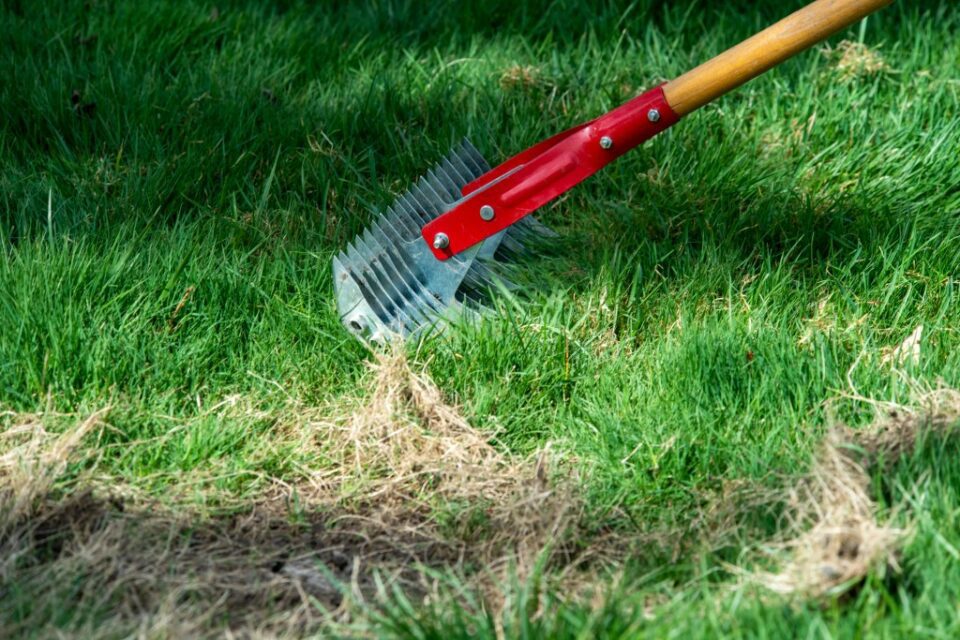
Do I need to collect the grass clippings when mowing my lawn to avoid thatch buildup? This practice created a lot of extra work for me last year. Can I skip this step?
— Nicole Phelps, Skokie
The mowing season is in full swing now and lawns in our area are growing quickly. Don’t worry about thatch buildup. Our Garden experts have found little evidence to suggest that clippings contribute to thatch buildup as long as you are mowing properly. If your lawn already has a thick layer of thatch, returning clippings may cause that layer to get bigger. A few things can contribute to this problem. First, if grass grows too tall before mowing, this can cause buildup of thatch. Second, especially in spring, some people apply too much nitrogen to their home lawns. Thatch is a loose, mixed organic layer of dead and living shoots, stems, and roots that develops between the zone of green vegetation and the soil surface. Thatch buildup begins when turf produces organic debris faster than it can be broken down. Thatch that is too thick keeps water, fertilizer, and air from penetrating to the roots, and can harbor insects and diseases. Roots begin to grow in the thatch layer and become more susceptible to drought stress. Thatch provides comfortable conditions for disease because once it is dry, it is hard to become wet again; and once it is wet, it stays wet. If you have a problem with thatch, power raking can quickly reduce it, while core
aerating once or twice a year will reduce it more slowly.
Mowing is a basic maintenance practice that affects the health and appearance of your lawn. Many gardeners cut their bluegrass lawns too short. Turf that is cut too short tends to have a shallow root system. Short turf is also less resistant to stress as the summer heat and dry weather sets in. Lawns that are under stress and growing less vigorously tend to have more weeds and pest infestations. Maintaining lawns at a taller height promotes a strong root system and helps choke out weeds. In hot weather, short lawns turn brown more quickly and allow weeds to move in. Mowing at the proper height and frequency is a simple way to improve the health and appearance of your lawn.
Lawns grow at different rates depending on the garden’s conditions as well as weather, maintenance practices and turf species. A good general rule is to mow your lawn at 3 to 3 ½ inches in height, and frequently enough so that no more than one-third of the total height is cut each time. The first couple of cuts of the season can be at a lower height as some lawns grow unevenly. Lawns grow more quickly in spring when the weather is rainy and cool, so weekly mowing usually works. When changing mowing heights, it is best to maintain a regular mowing schedule and adjust the height of the mowing deck up or down approximately 1/2 inch for each cutting. The last cut of the season should be at 2 inches.
Use a mulching mower to recycle clippings into the lawn. This saves time, reduces waste going to a composting facility, and returns nutrients and organic matter back to the soil. I prefer using a self-propelled mower that has rear-wheel drive. Avoid leaving piles of grass clippings on the lawn after mowing. Rake up excess clippings or run the mower over them again to break them up. Maintain sharp blades on your mower to get the best performance, and mow when the grass is dry. Sharpen the blades after approximately every eight hours of mowing. Try to alter the mowing pattern that you mow your lawn each week.
For more plant advice, contact the Plant Information Service at the Chicago Botanic Garden at [email protected]. Tim Johnson is senior director of horticulture at the Chicago Botanic Garden.
Tim Johnson , 2024-05-18 12:00:34
Source link


